Why doesn't Starbucks sell small cups? I have no choice but to explain that the medium cup is the minimum cup. Be scolded for the reason
Professional barista communication, please pay attention to coffee workshop (Weixin Official Accounts cafe_style )
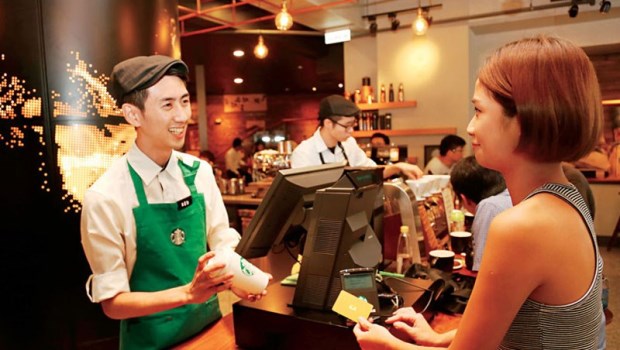
Schematic diagram, irrelevant to this article. Photo Source: Business Weekly/Photographed by Luo Yulong
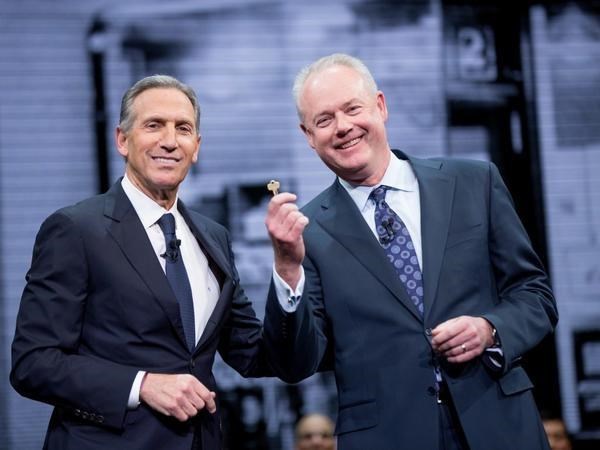
Howard Schultz, Starbucks 'longtime soul, has a five-year plan (to open 10,000 stores in five years and become a coffee chain that satisfies all customers!) Bringing the company into its heyday, but also facing more serious challenges...
Howard Schultz (left) and Kevin Johnson (right)
In recent years, Starbucks has encountered a double-sided dilemma in the coffee chain industry:
On the one hand, fast-food brands like Dunkin 'Donuts and McDonald's steal customers with cheap coffee
On the other hand, Intelligentsia and Blue Bottle emerged in the fine coffee wave (the third coffee wave), and baristas attracted high-end customers with exquisite skills.
Starbucks needs to think about more practical questions if it wants to be invincible in this diversified market competition:
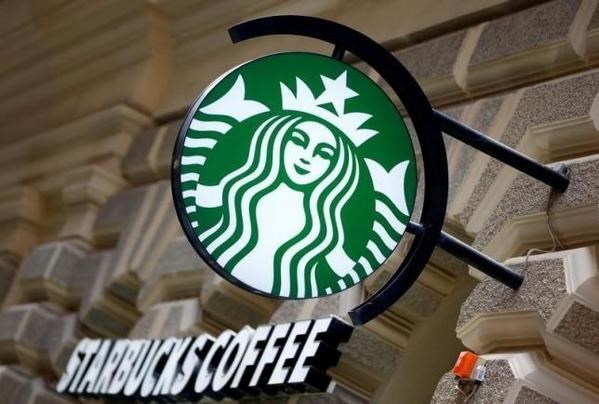
Controversial cup shape
When the first Starbucks opened in New York City, many Americans didn't even know what latte was, and the New York Times at the time wrote a detailed article about what latte was and how it sounded in Italian.
Starbucks 'emergence and popularity brought a different coffee culture and a series of innovative products to American customers, from which billions of dollars were made. A typical example of this is the Starbucks coffee cup.
Howard Schultz, inspired by Italian coffee culture, introduced the concept of large cups (grade) and extra-large cups (venti). Craig Gathwaite, associate professor of strategic studies at Northwestern University's Kellogg School of Management, believes that the cup is a micro-strategy for Starbucks to provide a macro luxury experience. For example, some customers can't afford a BMW, but he can drink a cup of Starbucks coffee that is more expensive than the regular cup, which is also a small luxury experience. As starbucks expanded, the names tall, grande, and venti replaced the traditional "tall,""large," and "venti."
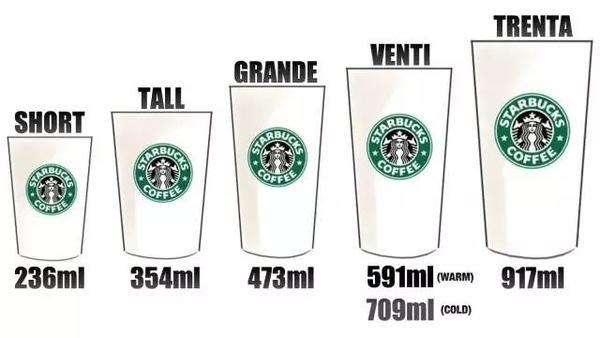
In 2004, Dave Barry published an article in The Times criticizing Starbucks cups. "Starbucks dupes customers by calling de facto small cups medium," he noted in the article,"and then actually calling them medium." The original text reads as follows:
Starbucks decided to call its cup sizes “Tall” (meaning “not tall,” or “small”), “Grande” (meaning “medium”)and “Venti” (meaning, for all we know, “weasel snot”). Unfortunately, we consumers, like moron sheep, started actually USING these names. Why? If Starbucks decided to call its toilets “AquaSwooshies,” would we go along with THAT? (Editor's note: When Taiwanese consumers order medium cups, they often encounter store assistants reminding them that "medium cups are our smallest cups")
In 2006, competitor Dunkin 'Donuts ran a satirical ad attacking Starbucks for mixing Italian and French on its menu and cup sizes. But it's also a reflection that Starbucks really made coffee as a soft drink in that decade. Latte became synonymous with elitism, and not all ordinary Americans could afford it.
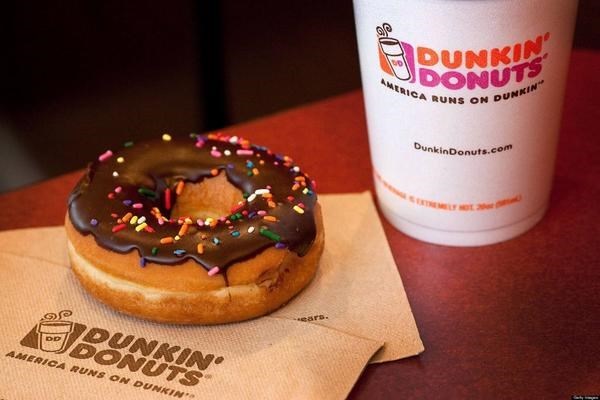
In 2008, Dunkin 'Donuts began selling drinks similar to Starbucks, but at a much cheaper price and with the brand's American heritage intact.
Howard Schultz believes that the integration of some meaningful cultural terms is Starbucks 'strategy to reflect brand uniqueness. Bryant Simon, an American scholar, wrote in his book Everything But the Coffee: "Customers believe that their Starbucks latte reflects their personality and taste, and they are willing to pay more."
Starbucks 'strategy differs from McDonald's and Dunkin' Donuts 'low-price, fast-food strategies in that it focuses on creating a romantic experience. But Starbucks could face a dilemma when problems like the Cup become common.
expansion is too fast
In the 1970s and 1980s, Starbucks was first and foremost a coffee roaster, and the second identity was a coffee chain.
When Howard Schultz joined Starbucks in the early 1980s, he was convinced that the company could expand rapidly while maintaining a high position. Howard Schultz left Starbucks in the mid-1980s after falling out with the company's founders (he failed to convince them that the company could become a global chain). It wasn't until 1987, when he acquired a controlling stake in Starbucks and 17 stores from its founders, that he began his own expansion plan.
Between 1998 and 2008, the number of Starbucks coffee shops grew from 1886 to 16,680. Starbucks aims to be the third destination between customers 'offices and homes. Ambitious expansion plans have met with plenty of irony.
In 1996, Starbucks had only 700 stores. In April, NPR's All Things Considered announced, as an April Fool's joke, that "Starbucks is building a transcontinental coffee slurry pipeline."
In 2000, the onion ran a satirical headline reading "new starbucks opens In Rest Room Of existing Starbucks."
That same year, an episode of The Simpsons featured Bart walking into a shopping mall and looking up to see Starbucks signs on every store.
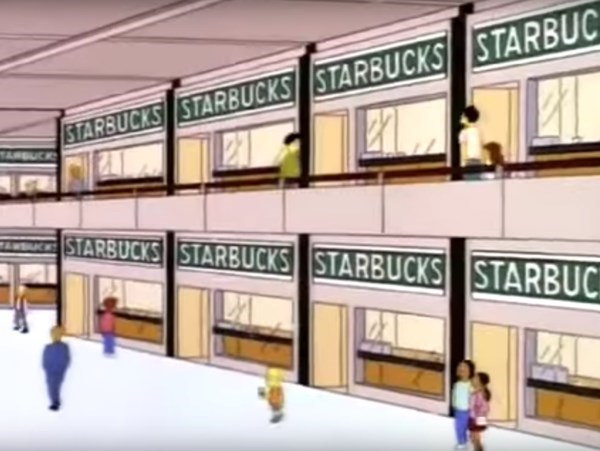
These funny stories reflect Starbucks 'potential problems from one side. Kevin Johnson, the new CEO, recently told Business Insider that the growth of new stores has exceeded the number of employees (capacity) that stores can serve. Companies forgo regular employee training and strategies aimed at higher-end markets in order to expand and reward shareholders.
In order to improve operational efficiency, the store began to use high-end automatic espresso machine La Marzocco, which was followed by a decline in coffee quality and a taste of "fast food".
Howard Schultz admits in his book Onward that crises usually come slowly and quietly, but they have a subtle ripple effect. He resigned as CEO in 2000, but remained on the company's board.
Competitors such as McDonald's smell opportunity and offer similar low-cost coffee drinks such as lattes. More and more people are asking themselves,"Why would I pay $4 for a cup of coffee?" Starbucks, a coffee chain giant, began to go through a recession and finally fell into a trough in 2008.
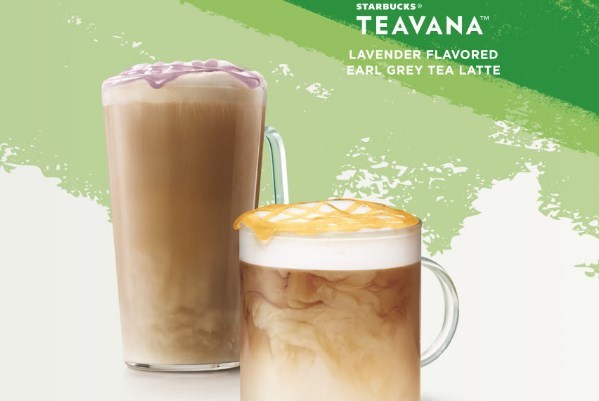
In January of that year, Howard Schultz returned to rekindle customer enthusiasm for Starbucks.
In February, he announced that he would close all 7100 outlets in the United States within 3.5 hours to retrain baristas on how to make high-quality espresso.
Starbucks closed 600 underperforming stores in July.
Under Howard Schultz's leadership, Starbucks stores began to return to brand roots, replacing espresso machines and renovating them with locally appropriate designs to give them a more "cafe feel." Since the end of 2008, Starbucks 'share price has risen more than 1140%, adding 10,000 stores worldwide.
In fact, Starbucks has not returned to the high-end positioning of the 1990s since then, and the brand has entered an era of attracting consumers from all walks of life. The positioning of the mid-level market has also become an incentive for Starbucks to fall into a "two-sided attack". Over the next few years, Starbucks 'share price stagnated again, and store traffic growth began to slow.
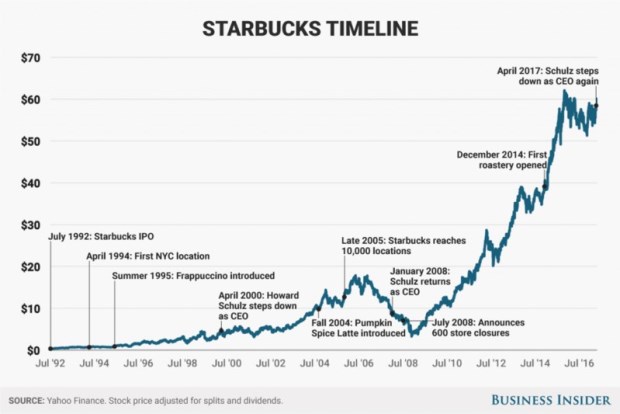
Important Notice :
前街咖啡 FrontStreet Coffee has moved to new addredd:
FrontStreet Coffee Address: 315,Donghua East Road,GuangZhou
Tel:020 38364473
- Prev
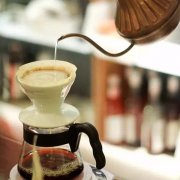
Should Uniqlo + Starbucks, Wal-Mart + CYTS brick-and-mortar stores take the "mash-up" style?
The lifestyle of drinking coffee and buying clothes, chewing snacks and buying two sets of cutlery in the store after dinner is not a wild story, it has already appeared in physical stores. Under the heavy pressure of e-commerce, a variety of innovative business forms emerge one after another: creating personalized services, introducing new brands, providing unexpected consumer experience, and finally a physical store +
- Next
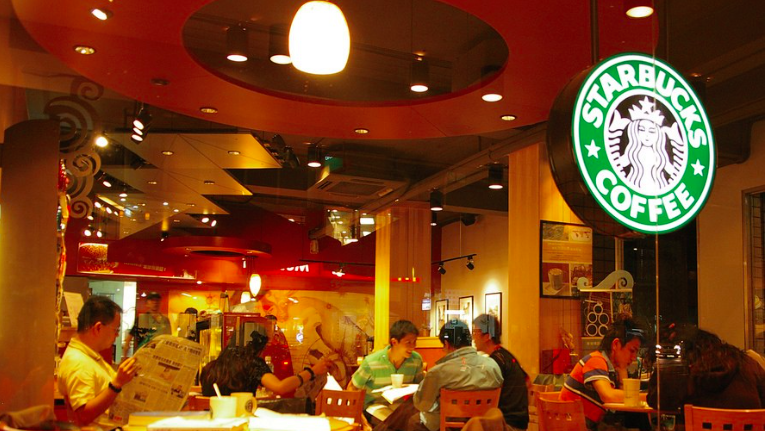
Both Starbucks and Pepsi have made such mistakes! The details that excellent store managers and entrepreneurs should pay attention to.
Professional barista communication please pay attention to the coffee workshop (Wechat official account cafe_style) the manager is the soul of a shop. In addition to being adept at in-store affairs, knowing the business strategy of opening a store, and being able to bring and manage people are all the skills that a good store manager needs. However, in the process of daily operation, some decision management processes should be paid special attention to. We sorted out 8 common myths to remind operators to step on the ground by mistake.
Related
- What documents do you need to go through to open a coffee shop? coffee shop coffee shop certificate processing process
- How to purchase Coffee beans in small Cafe how to choose a suitable supplier for domestic Coffee supply Company
- How to drink Starbucks Fragrance White Coffee? how to make Australian White Coffee? what Italian coffee beans are recommended?
- The Story of Flora Coffee: the name of Flora Coffee Bean and the implication of the Flowers on Florna Coffee
- How much does a cup of coffee cost? How much is the profit of a cup of coffee? What is the profit of the coffee shop in a year?
- Yunnan small Coffee, known as "fragrant Coffee", introduces the characteristics of Alpine Arabica Coffee producing areas in Yunnan, China
- 2023 latest Starbucks full menu price list how much is a cup of Starbucks coffee what is better to drink the most popular hot and cold drinks recommended
- Starbucks different kinds of Coffee Price list Starbucks menu 2023 Top Ten Best drinks in Starbucks
- Starbucks Spring praise Comprehensive matching Coffee Bean theme Story Packaging implication and taste description
- The cost of a cup of coffee latte American coffee cost price and selling price

